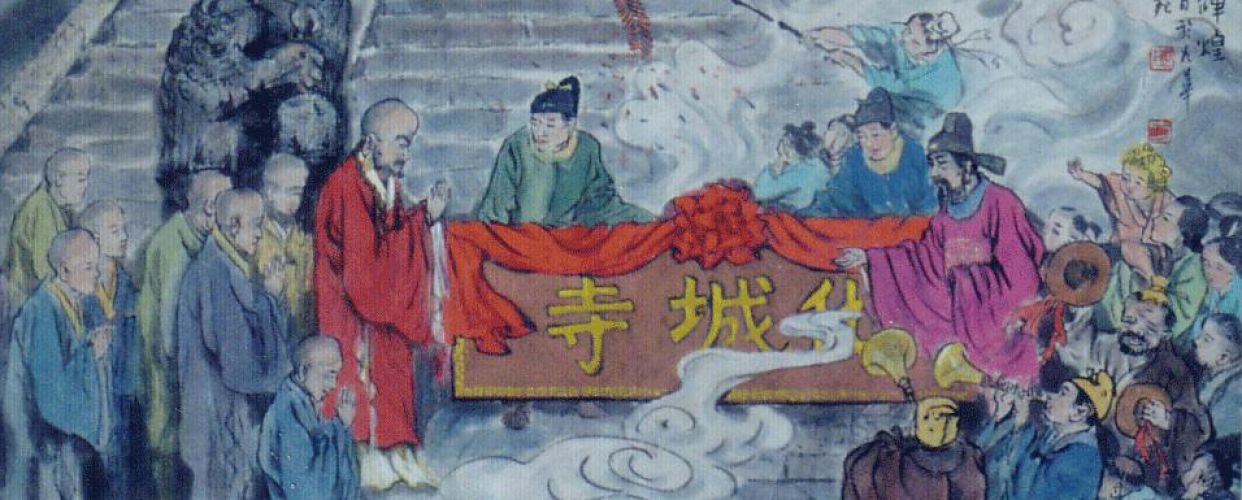
景点的名称:金乔觉
金乔觉(公元696-794),古新罗国(今韩国)王子,在中国唐朝佛教吸引日韩众多信徒的时尚潮流中,于公元719年出使中国,途径长江,受辽阔盆地、蜿蜒溪流与植被茂密、高耸的九华山峰地形吸引,契合其“雄奇、清秀、滋润、静谧”的修行场所理念,于现化城寺地建寺修行75年,99岁圆寂,后肉身不腐,被信徒视为地藏菩萨的化身,于神光岭建肉身塔供奉。金乔觉以“地狱未空不成佛”的持之以恒精神与“求诸所愿皆满足”的平等向善情怀所完成的一生,至今具有普世意义。
Kim Gyo-gak (A.D. 696-794), a prince of ancient Silla country (current Korea), visited China in A.D. 719 when Buddhism attracted many followers from Japan and Korea in the Tang Dynasty. He went through the Yangtze River and was attracted by the vast basin, winging streams, dense vegetation and towering Jiuhua peaks which maybe agreed with his philosophy of cultivation place “magnificence, comeliness, nourishment and tranquility”, he built a simple temple in the present Huacheng Temple and cultivated himself for 75 years. He passed away at the age of 99, and his flesh body didn’t rot. And he was regarded as incarnation of Ksitigarbha Buddhisattva by his followers who built a flesh body tower in Shenguang Ridge for worshiping him. Kim Gyo-gak adhered to the spirit of perseverance “I will not become a Buddhist until I deliver all living creatures from the hell” and benevolent emotion “May all wishes come true”, these ideas are still of universal significance nowadays.
你知道吗?Do you know?
地藏菩萨(梵语:Ksitigarbha),地是大地,地能担当一切,一切崇山峻岭,万事万物都在地上,比喻菩萨的功德,能为众生而荷担一切难行苦行;藏是含藏、伏藏义。地藏菩萨像大地一样,能含藏种种功德,能引申一切功德,难行苦行,救度众生,故名地藏。地藏王,是因为地藏菩萨化身的九华山地藏比丘出身新罗王族,所以加“王”字以尊称。
Dizang Pusa is called as Ksitigarbha in Sanskrit. The earth can take on everything, including magnificent mountains and precipitous ridges, which are compared to merits of Ksitigarbha that bear various sufferings of Beings. Zang inherits the earth and is of the earth’s merit. Ksitigarbha possesses all kinds of merits just like the earth and liberates all beings from tough austerities. Kim Gyo-gak, as the incarnation of Jiuhuashan Ksitigarbha Buddhisattva, was born in royal family of Silla, so the Chinese character King was added to respect him.